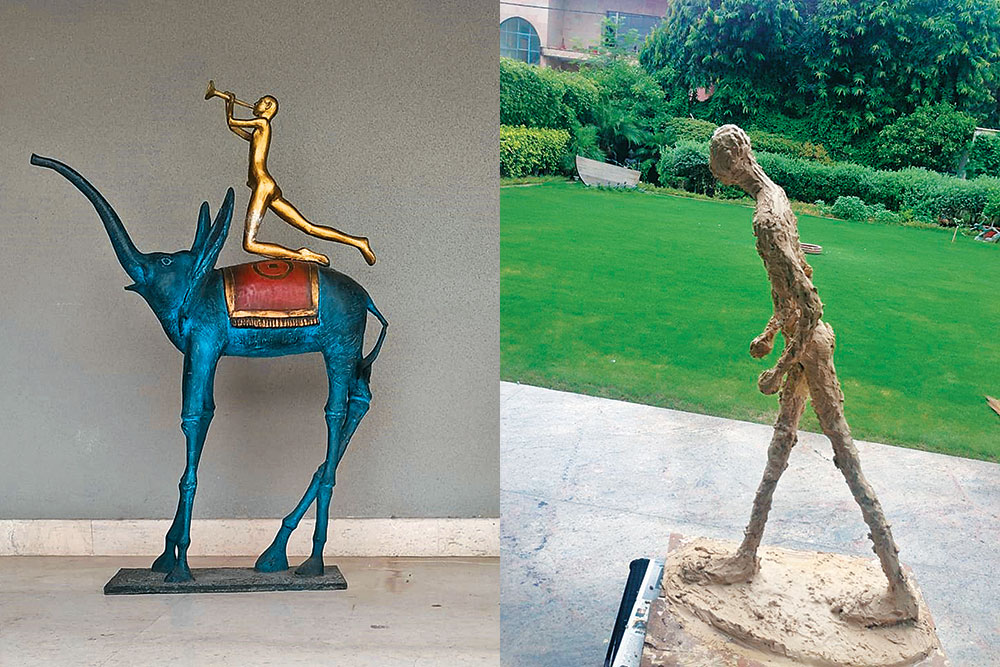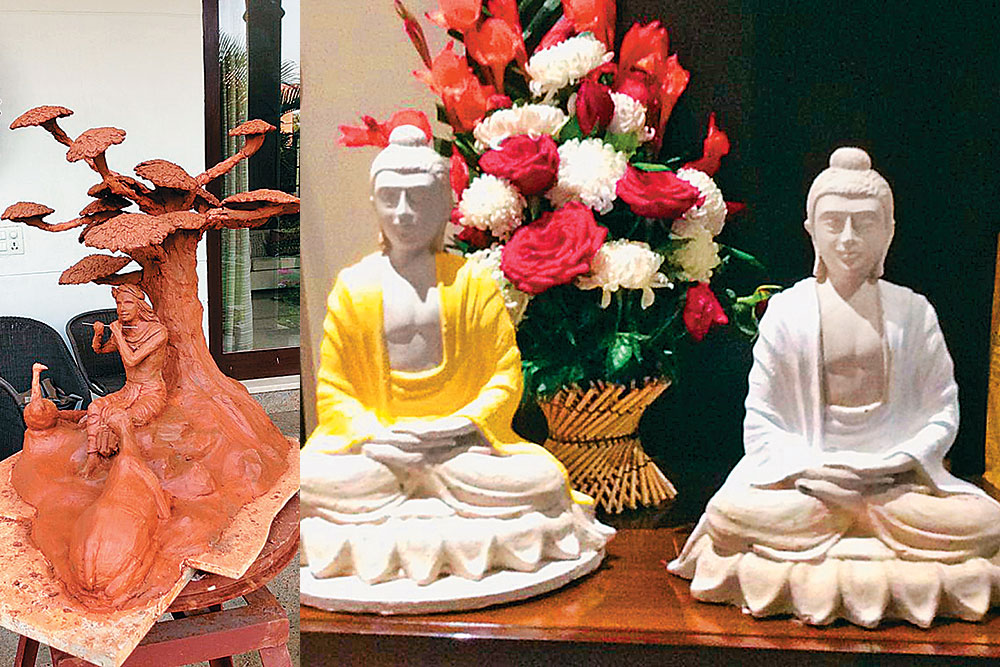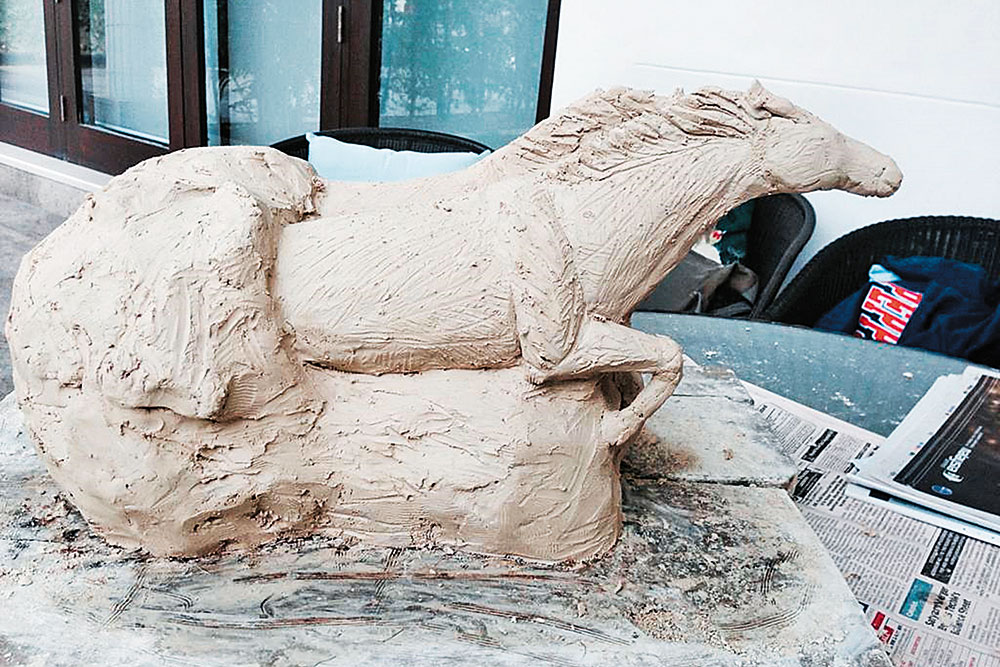In 2012, Akshay Munjal decided to embark on a Herculean task—of sculpting the Greek God himself. To up the difficulty level, the CEO of Hero Vired artistically combined two of Hercules’ nine tasks. The result? A clay figure of Hercules stepping on a lion and shooting an arrow. “It was tough because the base was the lion with Hercules’ foot emerging from it,’’ says Munjal, adding that it must have easily taken him three months to finish his most prized piece.
Munjal’s inclination towards sculpting dates back to his school days. He remembers taking keen interest in a subject called ceramics in which they were taught to make small pieces on the potter’s wheel. He says that, as a grown-up, whenever he would attend events like the India Art Fair and look at what the other artists were doing, the thought of doing something similar would take over him. He let that thought win and finally picked up sculpting in 2010. “Just the idea of working with wet clay, giving it shape and creating something new is very satisfying,’’ says Munjal, who, like most others, started off with clay Buddha sculptures and then tried different mediums and ideas. He speaks about how, during the lockdown, he made a sculpture which resembled a big stone with half of it carved into a horse.

Over the years, Akshay Munjal has made several sculptures which adorn his house and garden
While he finds the process fascinating and relaxing, he also highlights the techniques, science and challenges related to the craft, including it being time-bound. “If the clay remains outside and becomes too hot, it cracks. If it is cold outside, it will not take shape. Also, while you cannot be too aggressive with it, you also cannot be too slow,’’ he explains. Speaking of the science behind it, Munjal mentions how it is a hit-and-trial process for him where he has to figure out how to make the armature (frame), where it can take the load and what to do when it breaks.

Over the years, Akshay Munjal has made several sculptures which adorn his house and garden
The CEO says that there is a certain rhythm and flow to the entire process of making sculptures and it has taught him the virtue of acceptance. “You cannot force your will on the clay and tell it what to do. You could be making the most beautiful sculpture and it could just break — for no fault of yours. It teaches you that you have to work together with it and that there is only so much of your own will and what you desire that you can force on it,“ he says.

The other thing that Munjal takes from the craft is patience. “If you try and quicken the process, it will not work. It takes its own time. It is a natural medium,’’ Munjal adds.
Over the years, Munjal has made several sculptures which adorn parts of his house and even his garden. While he rues that he has not been getting enough time to get back to it dedicatedly, he is now trying to get his elder daughter into the fold.











